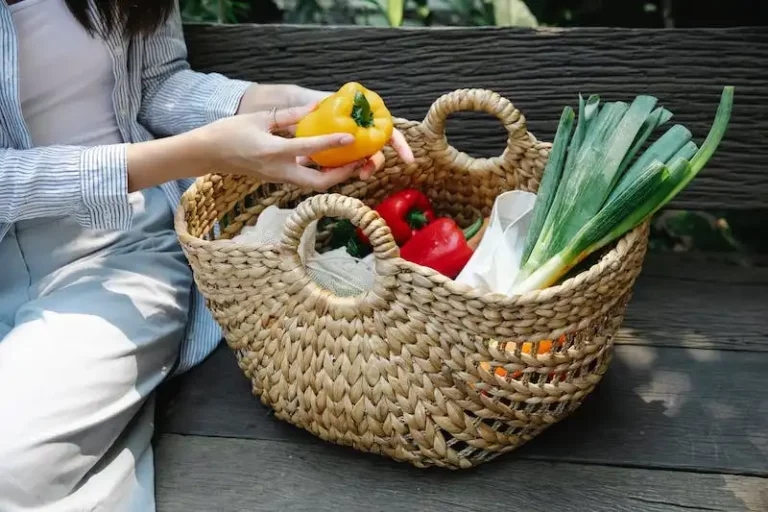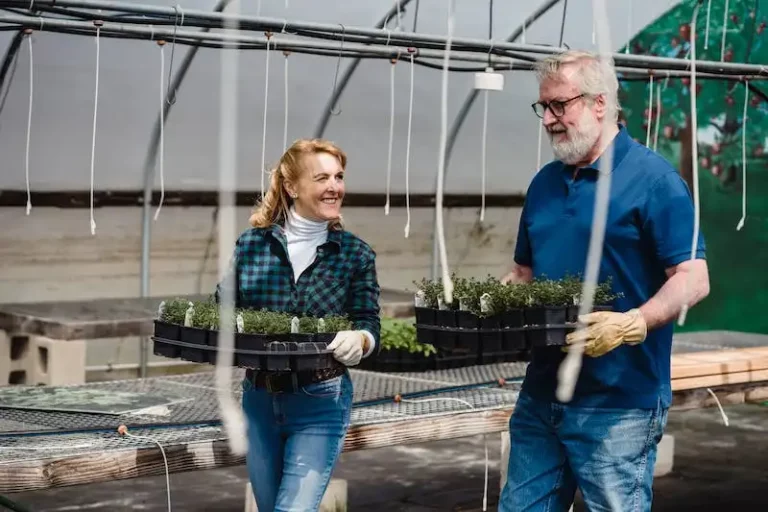Growing broccoli and cauliflower in your garden can be a rewarding and enjoyable experience. With some proper preparation and the best tips, you can easily conserve water and create a thriving garden. Whether you choose to grow them indoors or in an open garden, these versatile vegetables are sure to perform well and provide you with a bountiful harvest.
For those who live in areas with long, cold winters, it is recommended to begin growing broccoli and cauliflower indoors. This way, you can start them in late winter and transplant them into the garden as soon as the weather warms up. Broccoli and cauliflower plants prefer a planting depth of 1/4 inch and spacing of 18-24 inches apart for better productivity.
When planting your broccoli and cauliflower, it is suggested to amend the soil with composted matter to add nutrients and decrease the growth of weeds. Ensure that the plants receive full sunlight, as they prefer at least 6 hours of direct sunlight each day. Water the plants regularly, keeping the soil moist but not waterlogged.
What’s great about broccoli and cauliflower is that they are both cold-hardy vegetables. They can withstand temperatures as low as 20°F (-7°C) and continue to grow. However, make sure to protect young plants from frost by covering them with plastic or other suitable materials. Also, keep an eye out for pests such as aphids and caterpillars. In case of infestation, treat the plants with proper organic insecticides.
As the plants grow, you will start to see tight, compact heads form. These are called florets and are the edible parts of the plants. The size of the heads will depend on the variety you chose to grow. Once the heads are firm and compact, it is time to harvest your broccoli and cauliflower. Cut the heads with a sharp knife, making a clean cut just above the leaves. If you see any signs of discoloration or disease on the leaves, remove them immediately to ensure healthy growth.
In conclusion, growing broccoli and cauliflower in your garden can be a fun and rewarding experience. By following these tips, you will be able to grow healthy and delicious sprouts that will make a great addition to your meals. So, why wait? Click here to download a comprehensive guide on how to grow broccoli and cauliflower in your garden.
Growing cauliflower in home gardens
Many gardeners find that growing cauliflower in their home gardens is a rewarding and enjoyable experience. With proper care and attention, you can cultivate your own delicious, healthy cauliflower heads right in your own backyard. Whether you’re an experienced gardener or just starting out, here are some tips and guidelines to help you successfully grow cauliflower at home.
Choosing the right location
One of the first things to consider when growing cauliflower is the location in your garden. Cauliflower plants thrive in cool weather, so it’s best to plant them in areas where temperatures remain between 60°F and 70°F (15°C to 21°C). They also need full sun to grow well, so choose a spot that gets at least 6 hours of direct sunlight per day.
Preparing the soil
Cauliflower plants prefer well-drained, fertile soil. Before planting, make sure to prepare the soil properly. Remove any weeds and rocks, and loosen the soil with a garden fork or tiller. Mixing in compost or well-rotted manure can improve the soil’s fertility and provide necessary nutrients for the plants.
Planting cauliflower seeds
Cauliflower can be grown from seeds, which can be started indoors about 6-8 weeks before the last frost date in your area. When the seedlings are about 2-3 inches tall, they can be transplanted into the garden. Space the plants about 18-24 inches apart, and make sure each plant has enough space to form mature heads.
Proper care and feeding for cauliflower plants
Cauliflower plants require consistent watering, especially during dry spells. Make sure to water deeply, giving the plants about 1 inch of water per week. Mulching around the plants can help retain moisture in the soil and prevent weed growth.
Checking the plants regularly for pests and diseases is also important. Common pests that affect cauliflower plants include aphids and cabbage worms. Using organic solutions like insecticidal soap or introducing beneficial insects can help control these pests.
Harvesting cauliflower heads
As the cauliflower heads mature, they will form tightly packed florets. Once the heads reach a desirable size, they can be harvested. To prevent discoloration and maintain freshness, it’s recommended to harvest cauliflower heads in the morning. Cut the heads off the plant using a sharp knife, leaving a small stem attached.
Tips and tricks
– Start seeds indoors for an earlier harvest
– Provide the plants with adequate water and fertilize as needed
– Use black plastic mulch to warm the soil
– Protect young plants from cold temperatures with row covers or cloches
– Check your plants regularly for signs of nutrient deficiency or pest infestation
By following these tips, you can enjoy a bountiful harvest of fresh, delicious cauliflower from your home garden. Experiment with different varieties and recipes to make the most of this versatile and nutritious vegetable.
Source: [link to a reliable gardening website here]
Tips for Growing Broccoli Cauliflower in your Garden
When it comes to growing broccoli and cauliflower in your garden, there are some important tips to keep in mind. Here, we’ll walk you through how to plant, care for, and harvest these healthy and delicious vegetables.
Planting:
Broccoli and cauliflower are cool-season crops, so it’s best to plant them in early spring or fall. Choose well-drained soil that receives full sun. Spacing is key – make sure to leave enough room between plants for proper growth.
Care:
Broccoli and cauliflower plants need regular watering and fertilization. Mulches can help conserve moisture and suppress weeds. Be sure to protect them from pests like aphids and cabbage loopers, as they can damage the leaves.
Harvest:
Broccoli heads are ready to be harvested when they reach a good size and have tight, green florets. Cut them off at the base, and new sprouts will develop for a second harvest. Cauliflower is harvested when the head is large and solid, typically white in color.
Pests and Diseases:
Broccoli and cauliflower can be susceptible to aphids, cabbage loopers, and worms. Take care to monitor your plants frequently, and treat any infestations promptly. Proper spacing and good air circulation can also help reduce the risk of disease.
Common Questions:
Here are some frequently asked questions about growing broccoli and cauliflower:
- How often do broccoli and cauliflower need to be watered?
- What cultivars are recommended for growing in gardens?
- Why are my cauliflower leaves turning yellow?
- Do broccoli and cauliflower need fertilization?
- How deep should I plant broccoli and cauliflower?
By following these tips, you’ll soon be enjoying a bountiful harvest of delicious broccoli and cauliflower from your own garden!
Tips for growing Broccoli Cauliflower in your Garden
Broccoli and cauliflower are versatile and nutritious vegetables that can add a fun and well-rounded touch to your garden. Whether you have a green thumb or are just starting out, these tips can help you get started on growing these delicious vegetables.
1. Plant in the right spot: Broccoli and cauliflower thrive in full sun, so choose a spot in your garden that gets at least 6 hours of direct sunlight per day.
2. Prepare the soil: Broccoli and cauliflower prefer well-drained soil rich in organic matter. Before planting, amend your soil with compost or well-rotted manure to improve its fertility and drainage.
3. Start from seeds: While it’s possible to buy small plants from nurseries, starting with seeds gives you more options and control over the growing process. Sow seeds indoors 4-6 weeks before the last frost date, and transplant the seedlings outdoors once they are 4-6 weeks old.
4. Protect from pests: Broccoli and cauliflower are prone to pests such as loopers, cabbage worms, and aphids. To protect your plants, cover them with floating row covers or use insecticides labeled for vegetable use.
5. Mulch to conserve moisture: Mulching around your plants can help conserve moisture and prevent weeds. Use an appropriate mulch, such as straw or hardwood mulch, to keep the soil moist and reduce evaporation.
6. Provide adequate water: Broccoli and cauliflower need consistent moisture, especially during hot and dry weather conditions. Water deeply and regularly to ensure the plants stay healthy and productive.
7. Feeding and fertilization: To promote healthy growth and maximize productivity, feed your broccoli and cauliflower plants with a balanced fertilizer every 4-6 weeks. Follow the instructions on the fertilizer package for the appropriate dosage.
8. Harvest at the right time: Harvest broccoli when the heads are tight and firm, and before the flowers start to open. For cauliflower, harvest when the heads are white and tightly formed. Cut the heads off with a sharp knife, leaving a small portion of the stem attached.
9. Overwintering: In areas with mild winter conditions, you can leave the plants in the ground for a second-year harvest. However, if you’re in a colder climate, it’s best to harvest the heads and remove the plants. Cover the area with a layer of mulch to protect the soil during the winter.
If you have any questions about growing broccoli and cauliflower in your garden, download a recipe or find out where to buy those small seeds, then please feel free to ask. Take care and enjoy your bountiful harvest!
SHOPPING CHECKLIST
When it comes to growing broccoli and cauliflower in your garden, there are a few essential items you’ll want to have on hand. Here’s a shopping checklist to help you get started:
1. Seeds: Purchase broccoli and cauliflower seeds from a reputable supplier. Look for varieties that are suitable for your growing region.
2. Soil: Invest in high-quality soil that is fertile and well-drained. Broccoli and cauliflower thrive in nutrient-rich soil, so choose a blend that will provide optimal nutrition for your plants.
3. Mulch: Mulches can be very helpful when growing broccoli and cauliflower. They help retain moisture, suppress weeds, and regulate soil temperature. Consider using organic mulches like straw or compost.
4. Fertilization: Broccoli and cauliflower plants will benefit from regular fertilization. Look for a balanced fertilizer that provides essential nutrients, especially nitrogen, phosphorus, and potassium.
5. Pest control: Aphids and worms are common pests that can damage your broccoli and cauliflower plants. It’s important to have appropriate pest control measures in place. Consider using organic insecticides or natural predators to protect your plants.
6. Spacing and depth: Make sure you have enough space in your garden for the broccoli and cauliflower plants to grow. Follow the recommended spacing guidelines for each plant. Additionally, be mindful of the planting depth for the seeds or seedlings.
7. Harvesting tools: Prepare yourself with the necessary tools for harvesting. You’ll need a sharp knife or garden shears to cut the broccoli and cauliflower heads when they are ready for harvest.
8. Storage containers: Once the broccoli and cauliflower heads are harvested, you’ll need containers to store them. Look for airtight containers that will keep the heads fresh for longer periods.
9. Recipes: To fully enjoy the fresh and healthy harvest, explore different recipes for cooking broccoli and cauliflower. From delicious roasted dishes to refreshing salads, there are countless ways to incorporate these versatile vegetables into your meals.
By having these items on your shopping checklist, you will be well-prepared to start growing broccoli and cauliflower in your own garden. With proper care and attention, you’ll soon be able to harvest delicious and nutritious heads that will impress both you and your family!



